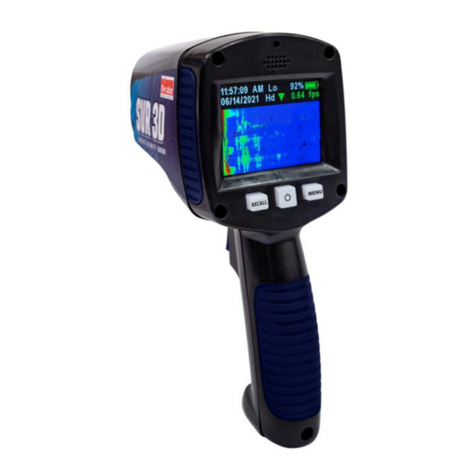
4
Introduction
The Scout 2 is a stationary radar that gives you the option to track vehicles that are approaching, receding, or moving
in either direction simultaneously. Directionality dramatically enhances the target selection process. For example,
if the radar is set in toward mode (down arrow), it will track only vehicles coming toward the radar and ignore all
vehicles moving away from it! On a road with bidirectional trac, you can choose to make trac moving in either
direction invisible to the radar.
Battery Charging
The Scout 2 is designed to primarily operate o of its internal battery pack and recharges from a ubiquitous type A
USB port. For the fastest recharge time, use only the Decatur Electronics recommended USB cable and charger.
When you receive your radar, the batteries will need to be charged for the rst time. Additionally, if the radar has
been stored for an extended period of time, you will want to recharge the batteries as well. A fully charged radar
should run for approximately 1 week between charges given normal use. To charge the batteries follow steps below.
• Connect the power cord to the USB-C receptacle on the bottom of the radar.
• Plug the radar’s power cord into your vehicle’s USB receptacle or A/C USB adapter.
• Charge Status Indicator.
Battery charging status can be determined two ways depending if the radar is on or o.
Radar O: When plugged into a powered USB port, the Power/Fast button will glow green when charging.
When the batteries are fully charged the green LED will go out.
Radar On: When plugged into a powered USB port, the battery charge icon will change to a charging icon.
The radar can be left to charge indenitely. The charging will automatically shut o once the batteries are fully
charged.
Operating the radar whiles charging
The radar may be operated while the batteries are recharging. The radar automatically switches from the internal
batteries to the power cord for power when the unit is turned on and will also recharge the batteries at the same time.
The batteries are not user serviceable. The batteries are designed to provide more than 70% of their
rated capacity after 500 charge/discharge cycles. If you are experiencing short run times between
charging, contact your factory authorized service centre for battery replacement.




























